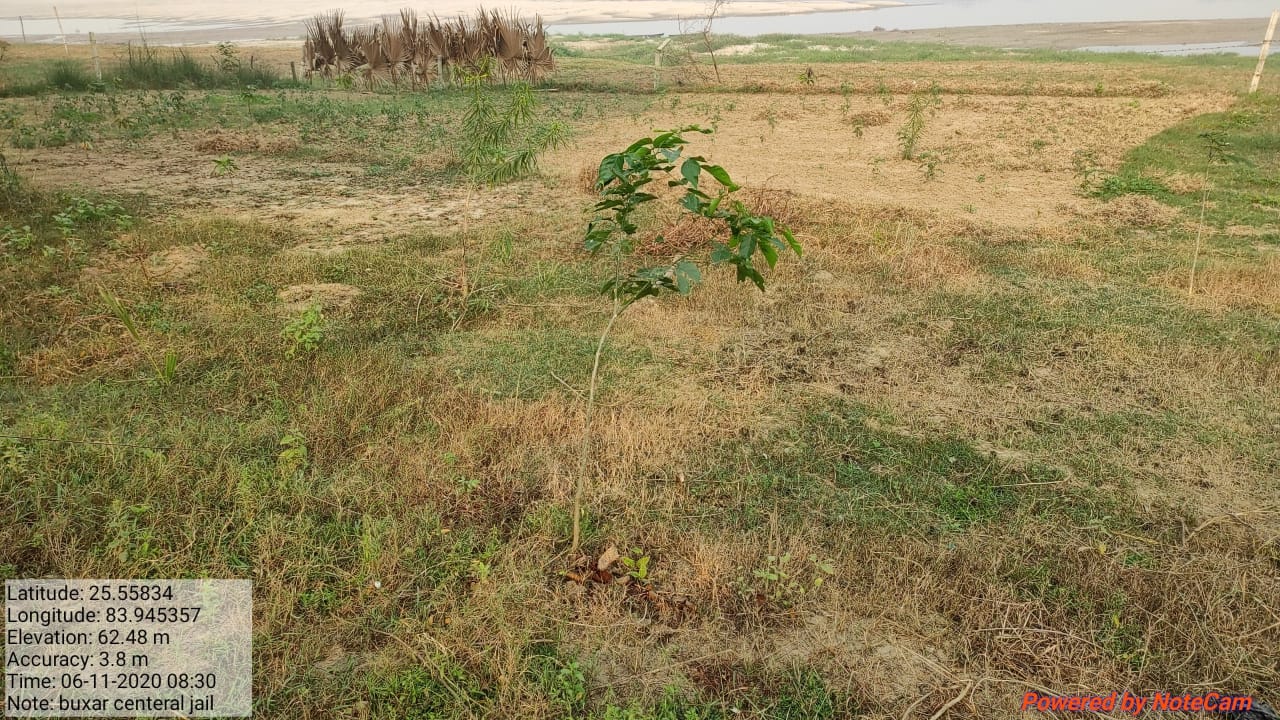
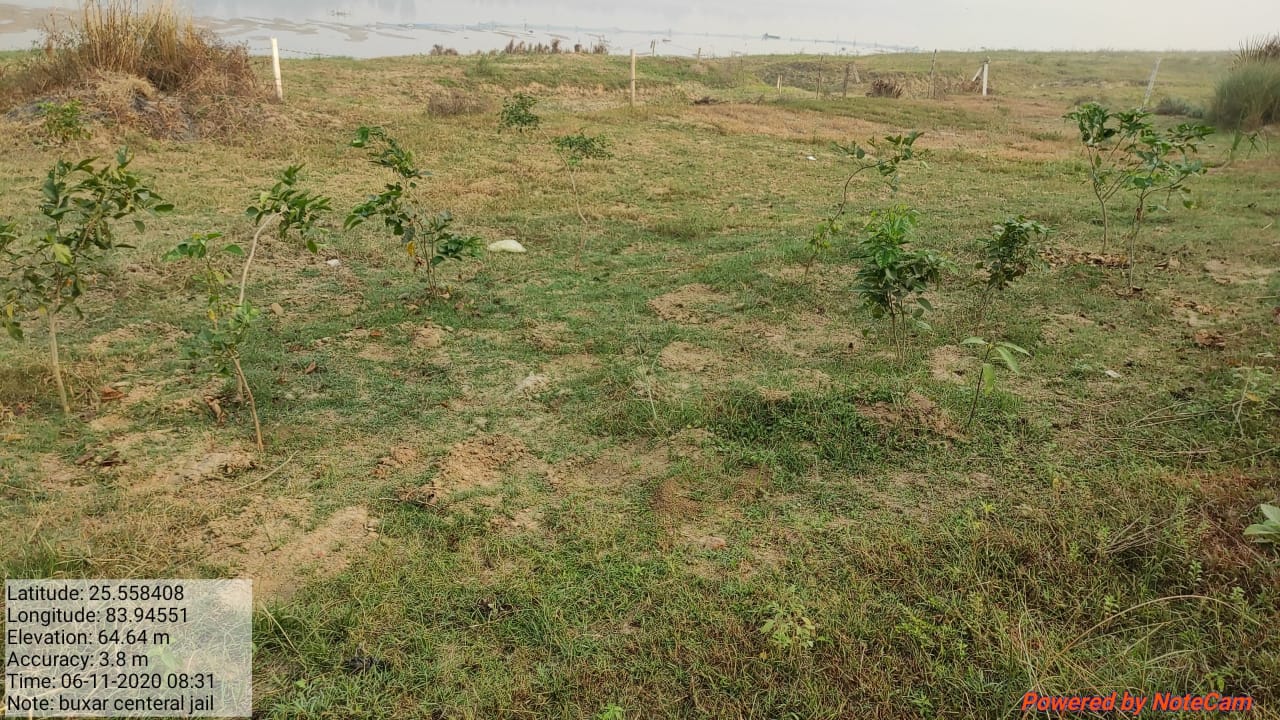
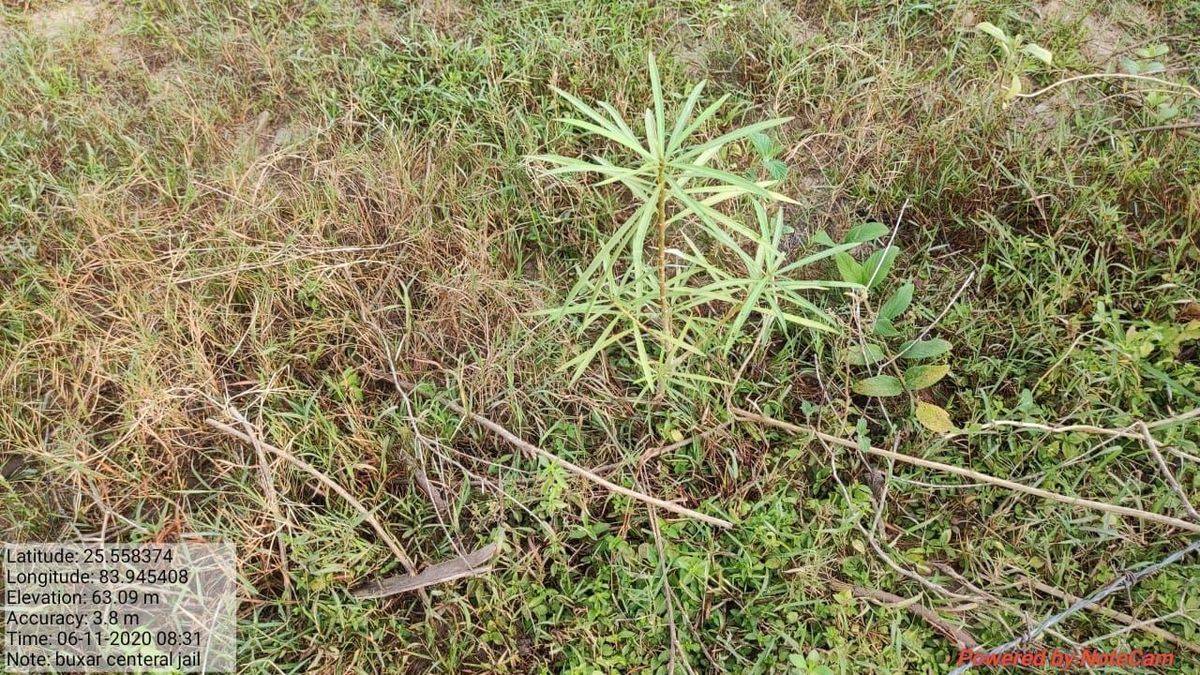
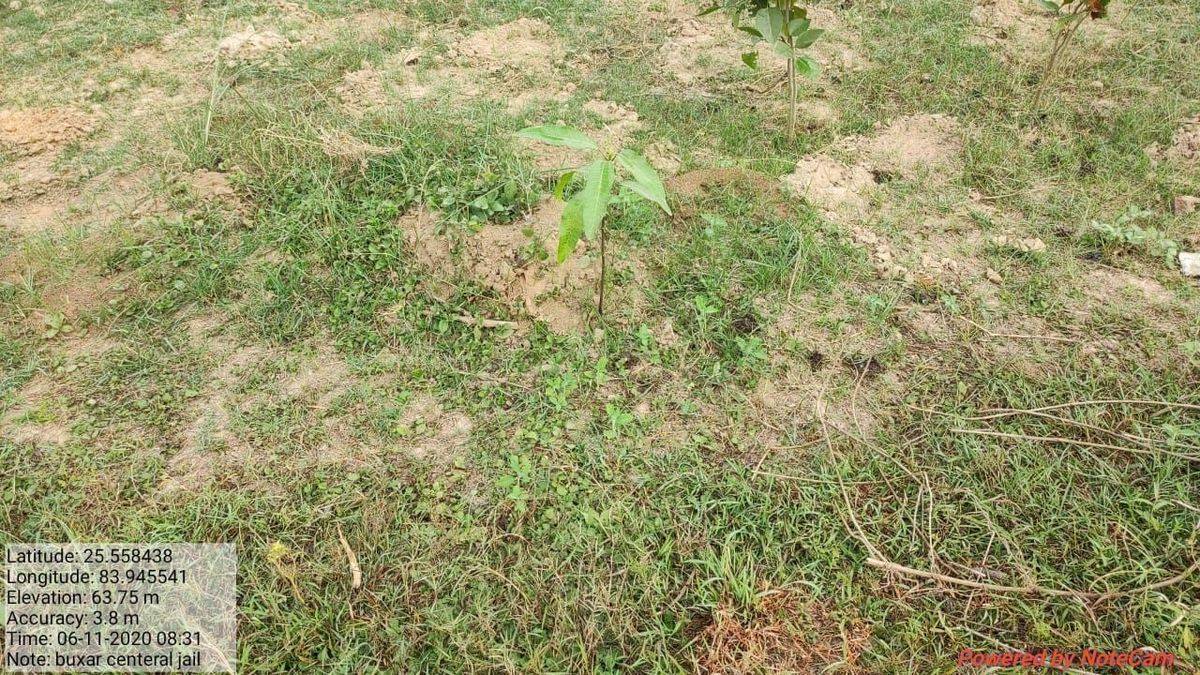
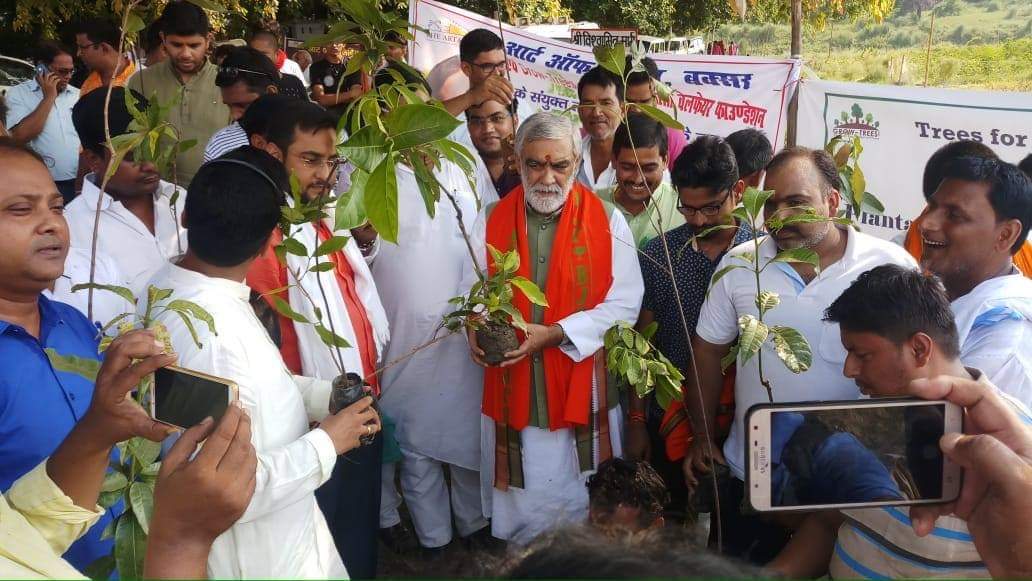
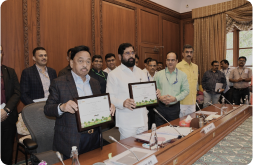
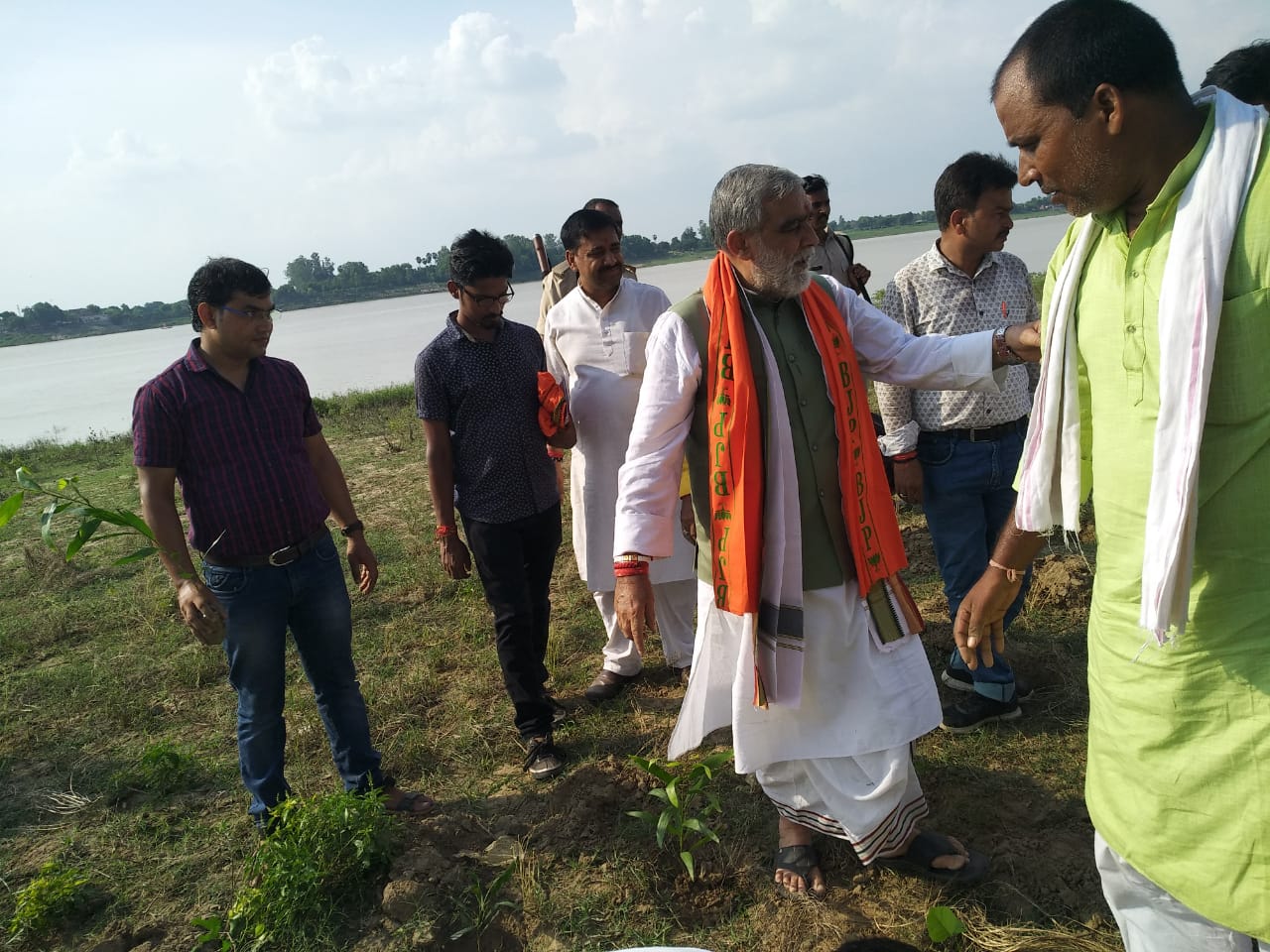

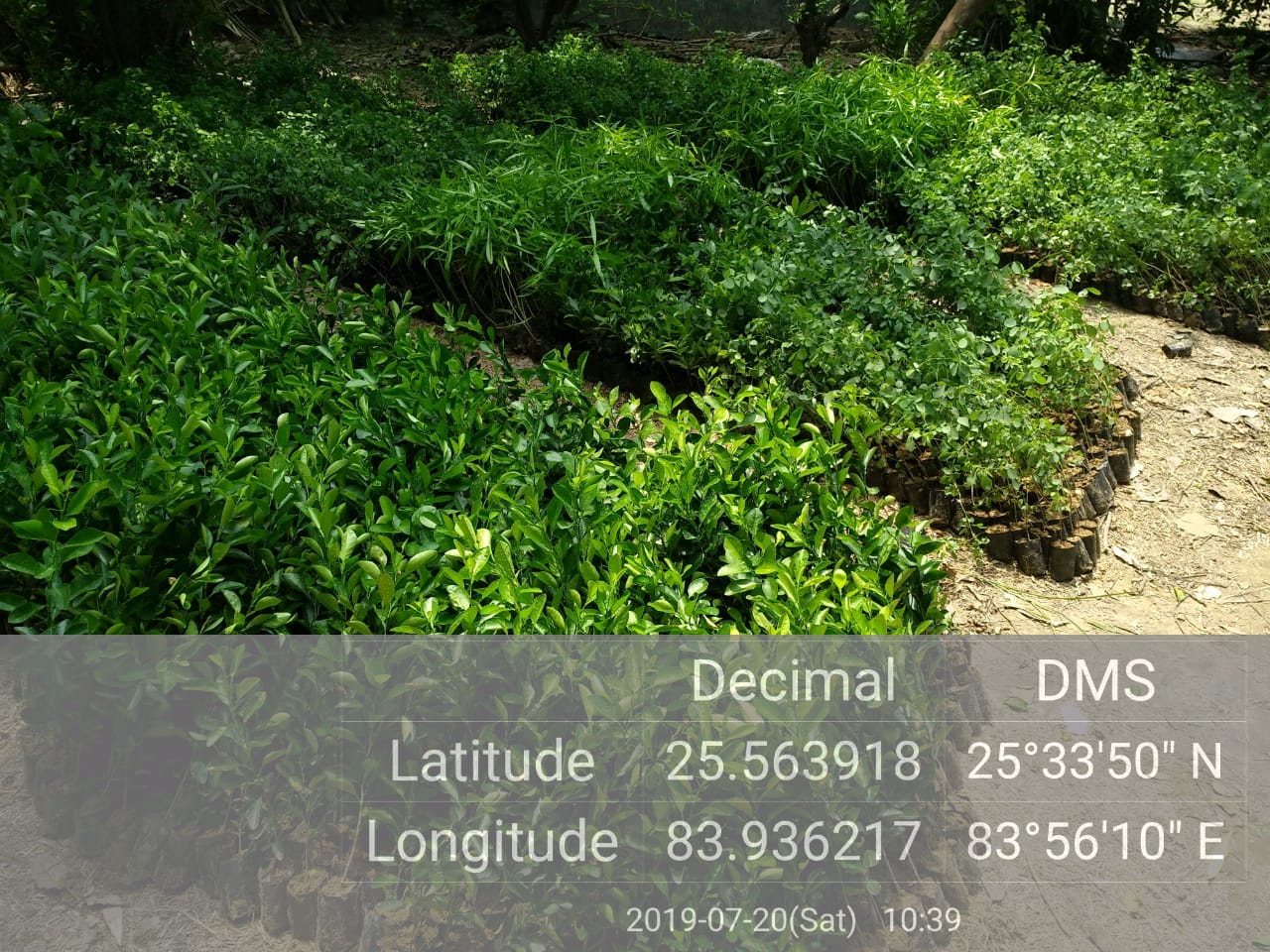
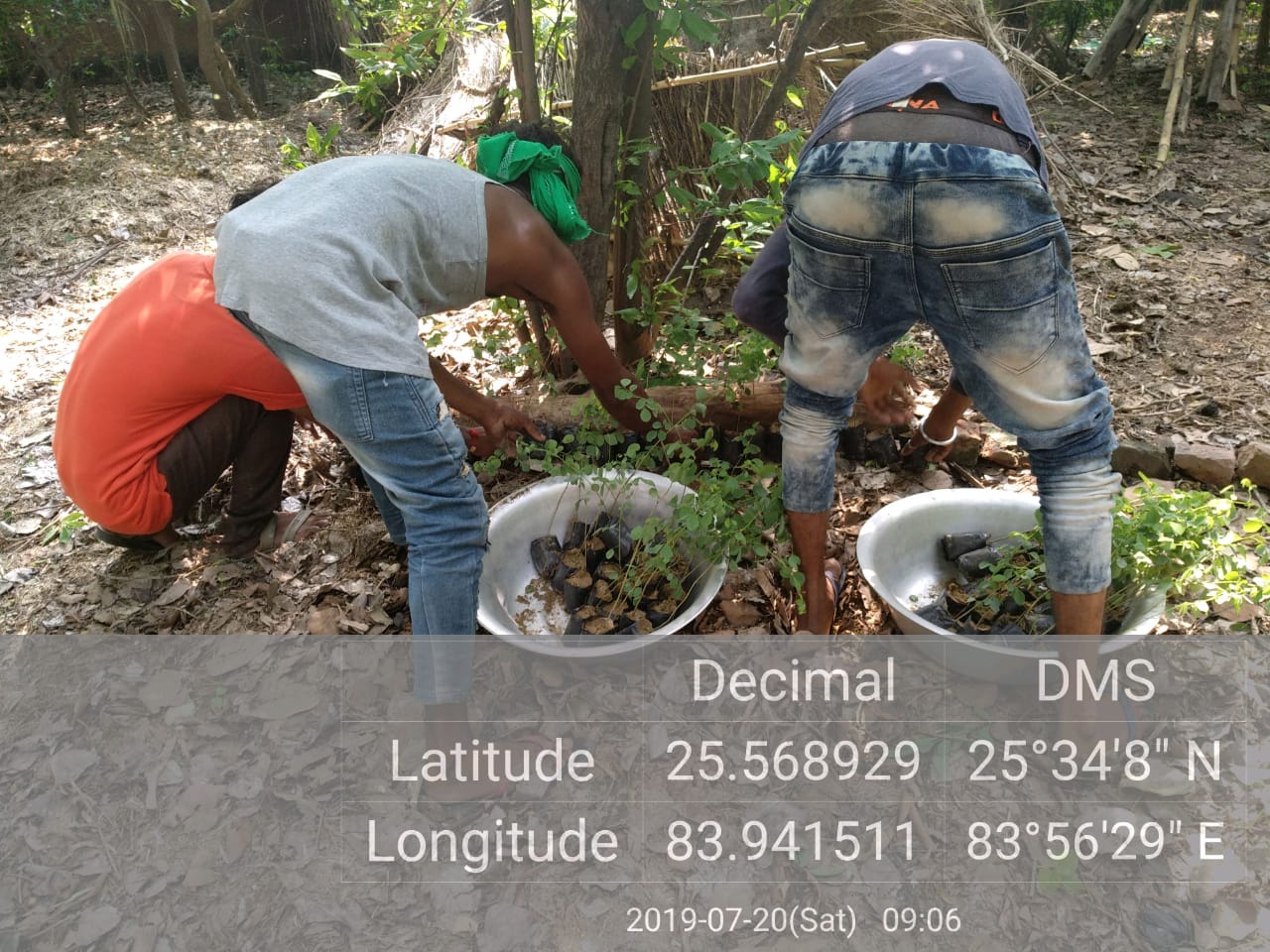
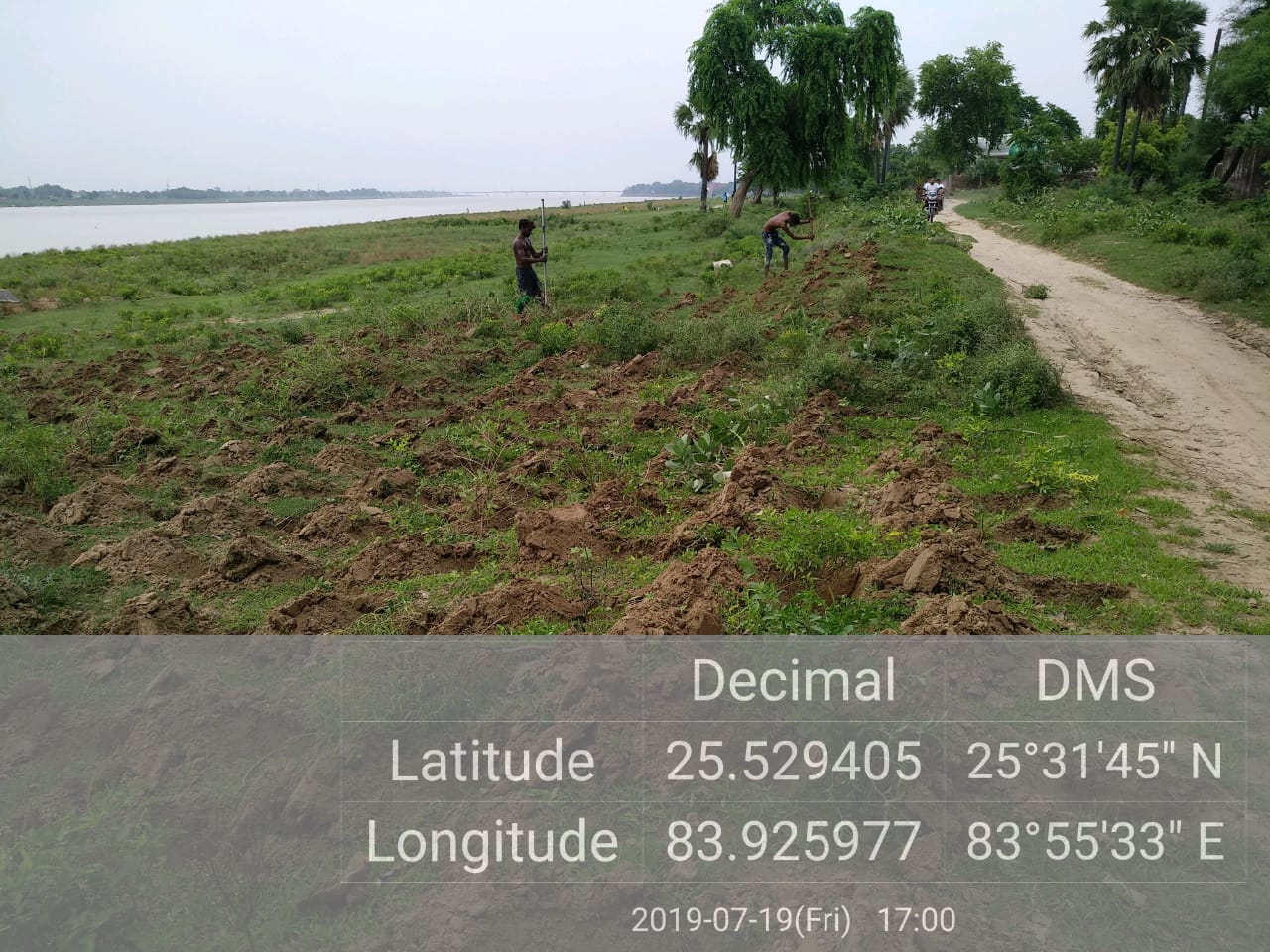
Project Target
0% Remaining
50,000
Trees Planted out of 50,000 Trees

Project Location:
Plantation of local tree species on the banks of the Ganges (Ganga), adjoining Buxar Central Jail in Buxar district in Bihar, India.
Project Aim
Forests are the lifeline of any river, which is why to conserve and rejuvenate one of the holiest Indian rivers, Ganga, an afforestation drive is initiated by Grow-Trees along its banks in Buxar. Tree plantation will help recharge groundwater, which will ultimately recharge the river through small tributaries. Talking about plantation activities along the river, Dr. Savita, Director, Forest Research Institute, Dehradun stated, “It will contribute to checking siltation and increasing the water flow.” “Ganga remains one of the most sacred rivers in the world with sacred pilgrimage sites and cities along its banks. Its depleting water flow has been a cause of concern for the citizens and the government alike. The revival of forests in the areas where the river flows will help in restoring it.”, quoted ANI in its article on ‘Massive afforestation to help conserve, rejuvenate River Ganga”.
According to the research - Ecological Imbalances in River Ganga, R.K. Sinha and N.K. Das also mentioned how “It (Ganga) has served as a cradle of the Indian civilization but with the increase in the riparian population the holy river has been subjected to intense pollution through various sources resulting in extinction/endangering of a lot of endemic fauna.” Based on several research studies carried out by the Central Pollution Control Board of India, it is evident that a river in full flow can have a mitigating effect on pollution. Besides directly filtering the water before it enters streams from fields, trees also help indirectly. When water volumes in a river are high, pollution and sewage are diluted to some extent.
Under the project, 50,000 saplings are to be planted along with our planting partner, Impact Guru Foundation, which will help in improving the river flow, thus, lessening the effects of pollution. According to the United States Department of Agriculture, “Vegetation and plant debris slow surface runoff, encouraging sediment and sediment-bound contaminants to settle before entering surface water. Once in the soil, contaminants can be immobilized and transformed by soil microbes or taken up by vegetation. Groundwater flowing through the root zone is also filtered by these processes. Additionally, trees can trap windblown dust before it enters streams and lakes.” Furthermore, the plantation will also boost the economy of the farmers since they can earn additionally from the sale of fruits and wood.
Plants are diminishing at an alarming rate due to a lack of organized and sustainable cultivation based on scientific data and a lack of awareness of society influencing plant use. Biodiversity is the basis of human survival and economic well-being and constitutes the resources upon which families, communities, nations and future generations depend. Hence, the plantation of trees has become a necessity to mitigate climate change and preserve the holy river, Ganga.
Karanj (Millettia pinnata), Shisham (Dalbergia sissoo), Earleaf Acacia (Acacia auriculiformis), Jamun (Syzygium cumini), Mango (Mangifera indica), Neem (Azadirachta indica), Kanel (Cascabela thevetia), Arjun (Terminalia arjuna) and Lemon (Citrus limon)
On average, a tree offsets 20 kg of carbon and produces 118 kg of oxygen every year upon maturity. As this project is located alongside the banks of River Ganga, afforestation on the previously barren lands will lead to the improvising of the quality and quantity of the groundwater table. Trees will reduce soil erosion and renew soil fertility in the region. The trees reverse the effect of adverse climatic conditions and natural phenomena, thus protecting the community at risk. In addition to augmenting water catchment, reducing soil erosion, recharging groundwater, providing flowers, fruits, fodder, and fuel, improving wildlife habitats, generating oxygen, reducing carbon dioxide in the atmosphere and fighting climate change, this project will create approximately 4,100 workdays in the nursery and planting activities for the local communities. By planting these trees, the organization will contribute to protecting soil erosion/riverbank erosion/reducing siltation and ensure better-quality water to over 3 million people.
| Name of the Company | No. of Trees | Fiscal Year |
|---|---|---|
| DHL Logistics | 25,800 | 2020-21 |
| Ernst & Young LLP | 25,000 | 2020-21 |
| Other Contributors (Individuals & Corporates) | 24,200 | NA |
Social Impact of Growing Trees
Community Engagement
Tree planting initiatives often involve local communities, which can lead to greater community cohesion.
Ecological Education
Provides opportunities for community members, especially children, about the importance of environmental sustainability.
Urban Beautification
Trees contribute to the aesthetic enhancement of urban areas, making cities more pleasant and liveable.
Climate Resilience
By improving green cover, tree planting helps make communities more resilient against climate impacts like heatwaves.
Employment Creation
Planting trees creates employment for local community members like planting and maintenance, administrative roles, and more long-term jobs in management.
Wildlife Habitat
Trees provide critical habitats for various species of wildlife. Enhancing tree cover helps preserve biodiversity, which can be an ecological boon for local communities
Copyrights @ 2025 All rights reserved by Pangea EcoNetAssets Pvt Ltd.